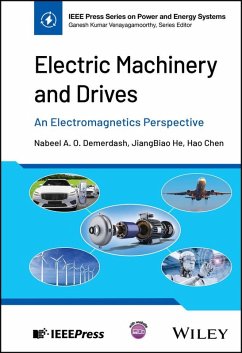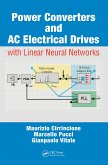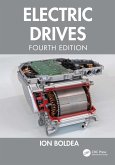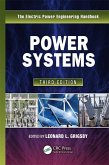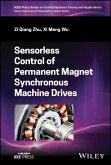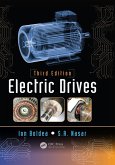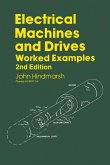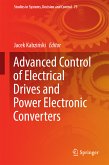Comprehensive resource on the fundamentals of electric machinery and variable speed drives, and their many conventional and emerging applications
Electric Machinery and Drives: An Electromagnetics Perspective provides advanced concepts of electrical machinery with control/drives and emphasizes the necessity of integration of power electronics and control strategy when studying modern electrical machinery. The text incorporates the fundamentals of electric machinery, variable speed drives, and motor controls, with the scope of including both the introduction of detailed operating principles as well as the electromagnetic design and control details from scratch.
The authors start with the introduction of electric circuit notations and elementary concepts of electrical circuits, power electronics, magnetostatics, magnetic circuits, and fundamentals of electromechanical energy conversion. Later, the book elaborates on the operating principles of polyphase induction machines and synchronous machines, as well as the associated scale and vector controls of these machines.
To aid in reader comprehension, the text includes a solutions manual and accompanying video animations.
Electric Machinery and Drives also contains information on:
Electric Machinery and Drives is an ideal learning resource in undergraduate or graduate-level courses for all universities with electrical engineering programs across the world. Additionally, the text may be used as a fundamental reference by researchers and engineers in electrical, mechanical, automotive, aerospace, and automation engineering.
Electric Machinery and Drives: An Electromagnetics Perspective provides advanced concepts of electrical machinery with control/drives and emphasizes the necessity of integration of power electronics and control strategy when studying modern electrical machinery. The text incorporates the fundamentals of electric machinery, variable speed drives, and motor controls, with the scope of including both the introduction of detailed operating principles as well as the electromagnetic design and control details from scratch.
The authors start with the introduction of electric circuit notations and elementary concepts of electrical circuits, power electronics, magnetostatics, magnetic circuits, and fundamentals of electromechanical energy conversion. Later, the book elaborates on the operating principles of polyphase induction machines and synchronous machines, as well as the associated scale and vector controls of these machines.
To aid in reader comprehension, the text includes a solutions manual and accompanying video animations.
Electric Machinery and Drives also contains information on:
- Real and reactive power in single-phase and balanced three-phase circuits and devices using consumer system concepts and notations
- Forces and torques in simple magnetically linear and nonlinear, multi-excited electromechanical devices and systems
- Simplified T-equivalent circuit model and its use in performance calculations of induction machines and associated torque-slip (speed) characteristics
- Brush-commutator and brushless DC machines, and natural ABC frame and Park's two-reaction DQO frame state-space modeling of synchronous and induction machines
- Special machines, including single-phase induction machines, switched reluctance machines, and others
Electric Machinery and Drives is an ideal learning resource in undergraduate or graduate-level courses for all universities with electrical engineering programs across the world. Additionally, the text may be used as a fundamental reference by researchers and engineers in electrical, mechanical, automotive, aerospace, and automation engineering.
Dieser Download kann aus rechtlichen Gründen nur mit Rechnungsadresse in D ausgeliefert werden.

